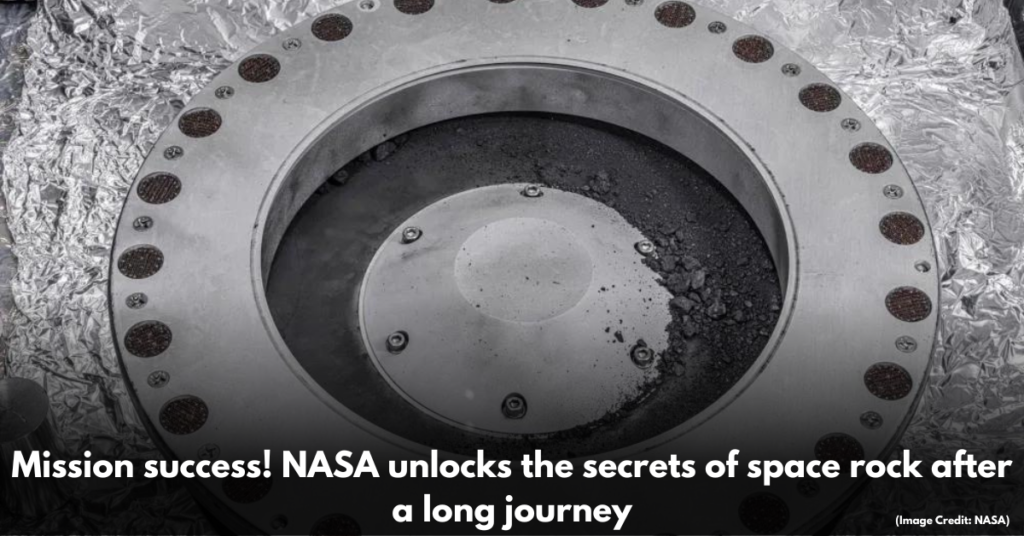Mission success! NASA unlocks the secrets of space rock after a long journey
NASA’s most recent mission to find out more about space rocks was a huge success. The project, which took a long time, taught us a lot about how our solar system formed and how we might be able to explore space in the future.
Andrew Needham, a scientist at NASA, led the journey and used advanced tools and methods to study samples from the moon and asteroids. Neutron scattering is one of these methods. It was used to look at the minerals in Apollo samples and asteroids. Scientists found clues in the samples about how planets formed in the past and that there was water on the moon.
The moon must have water because it could be used to power space travel in the future. People used to think that the moon didn’t have much water, but new studies have shown that water is trapped in the minerals in moon rocks. This water could build up near the moon’s poles after it hits something.
The project has also given us information about how the solar system came to be and about the minerals that could help us get to Mars faster. The moon and meteorite samples are made up of different kinds of rocks, some that look like gravel and some that look like lava rock from Hawaii. The samples are made up of different chemicals and show different geological and astronomical events that happened on the moon over time.
The fact that this trip was a success demonstrates how potent science and exploration are. Finding out what space rocks are hiding will help us understand our place in the universe and open up new ways to explore space in the future. By looking at these moon and meteorite samples, we can learn a lot about the makings and past of other celestial bodies. The rocks in these samples can help us figure out how our solar system came to be and how it has changed over time.
Scientists can also come up with better plans for future space trips, like the big goal of getting to Mars, by learning more about the geological and astronomical events that happened on the moon. People can keep pushing the limits of what we know by using the power of scientific study and exploration. This will pave the way for a future where space travel is possible.
NASA’s recent mission to find out more about space rocks has taught us a lot about how our solar system formed and how we might be able to explore space in the future. It is very important that water is found on the moon and that there are minerals that could help speed up the journey to Mars. This mission shows how powerful scientific study and exploration can be, and it also shows how important it is to keep putting money into space exploration.



